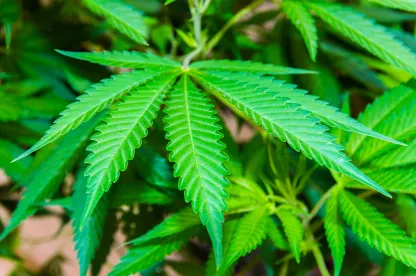On October 31, 2019, as required by the 2018 Farm Bill, the U.S. Department of Agriculture’s (USDA) Agricultural Marketing Service published its interim rule, “Establishment of a Domestic Hemp Production Program” (Interim Rule). The Interim Rule proposal specifies rules and regulations governing hemp production in the U.S., including:
-
Requirements for state/tribal plans for states pursuing regulatory authority over hemp production;
-
Recordkeeping requirements;
-
Licensing requirements;
-
Delta-9 tetrahydrocannabinol (THC) testing;
-
Procedures for disposing of non-compliant plants; and
-
Compliance provisions and procedures for handling violations.
The Interim Rule does not alter the federal definition distinguishing hemp from marijuana, a distinction hinging on the levels of THC in the plant. Plants containing 0.3 percent or less THC on a dry weight basis are considered hemp, while plants exceeding this level of THC are marijuana. The Interim Rule introduces the term “acceptable hemp THC level” to account for a degree of uncertainty in testing results and explains how to interpret lab results with a measurement of uncertainty. This is a critical clarification given that THC levels dictate whether a grower is engaged in the legal production of hemp or is growing marijuana -- prohibited federally and in the majority of states.
The USDA is not proposing a single uniform testing method and will accept numerous testing methods and protocols employed by states. The Interim Rule does not include a federal seed certification program. The Interim Rule makes clear that interstate transport of hemp is permissible regardless of whether the states the shipment passes through allow hemp production.
The publication of the Interim Rule initiates USDA’s implementation of the hemp program, which includes reviewing state/tribal plans and issuing licenses. USDA will accept public comments on the Interim Rule for 60 days through December 30, 2019. Within two years of publication, USDA will publish a final rule. Also relevant for hemp producers are forthcoming proposals from the U.S. Food and Drug Administration and the U.S. Environmental Protection Agency (EPA) addressing the sale of cannabidiol (CBD) and pesticide approvals for application to hemp plants, respectively.
Commentary
For some, federal policies facilitating hemp production not only is a long-awaited policy goal, but a kind of “gateway drug” (pun intended) for renewing the debate about approval for pesticide products to be used on the legal production of marijuana crops.
To date, the federal government position is that since marijuana production is not allowed under federal law, attempts by states to permit pesticides for state use are forbidden. Some states have argued that since their state law allows the production of marijuana crops, pesticide products should be subject to registration under Federal Insecticide, Fungicide, and Rodenticide Act (FIFRA) Section 18 emergency use or FIFRA Section 24(c) special local needs.
Separate from any debate about marijuana production, residues of pesticides on hemp products intended for human consumption, such as CBD products, will force EPA to consider how such products should be reviewed. Those policies, in time, will be relevant to any eventual evaluation of similar exposure and risk assessment questions regarding approval of pesticide products to be used in marijuana production.



 />i
/>i
